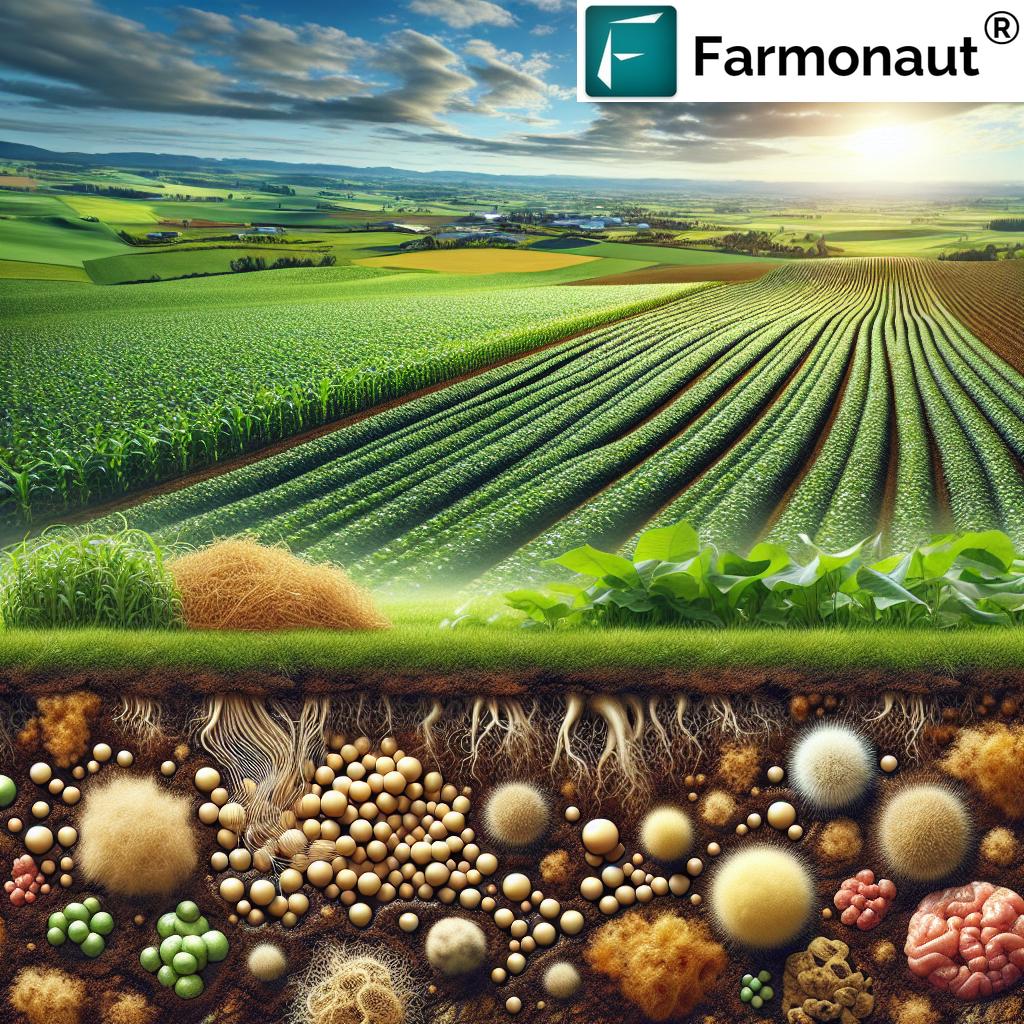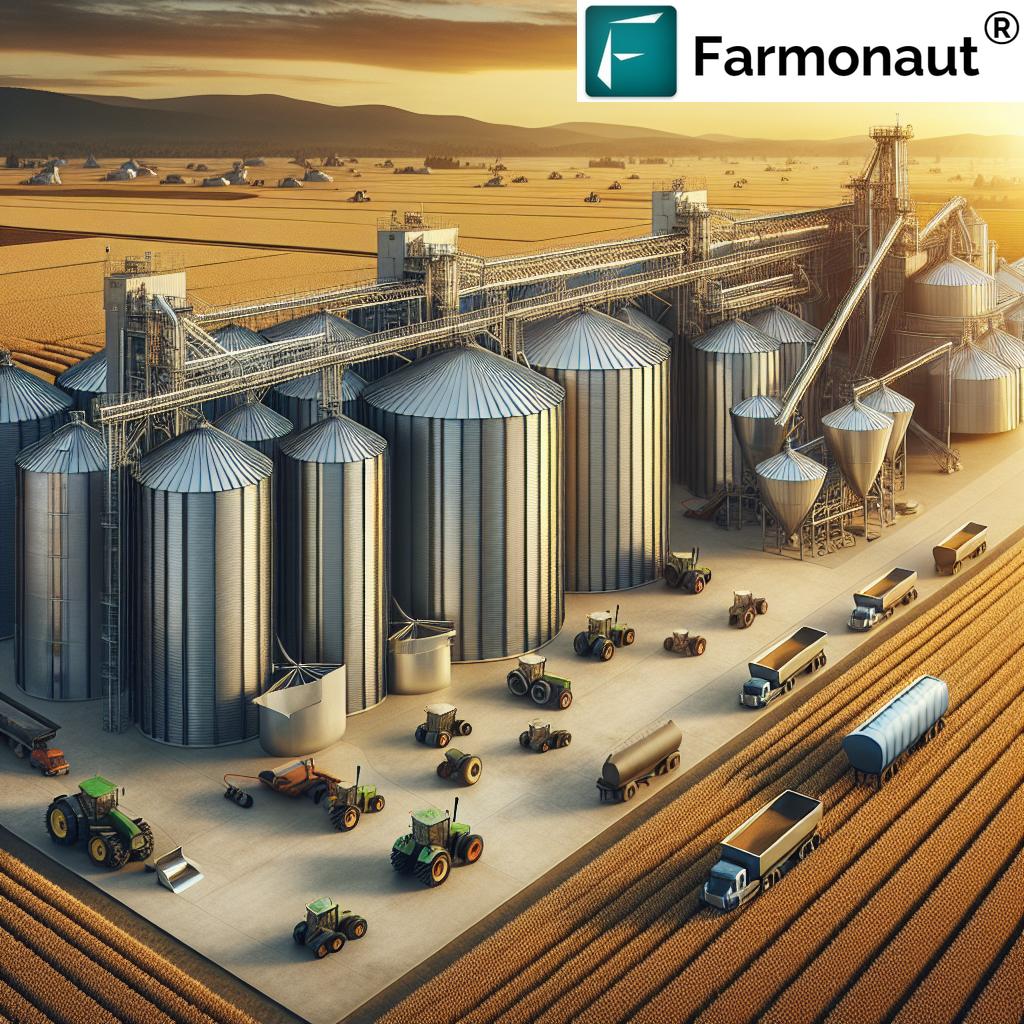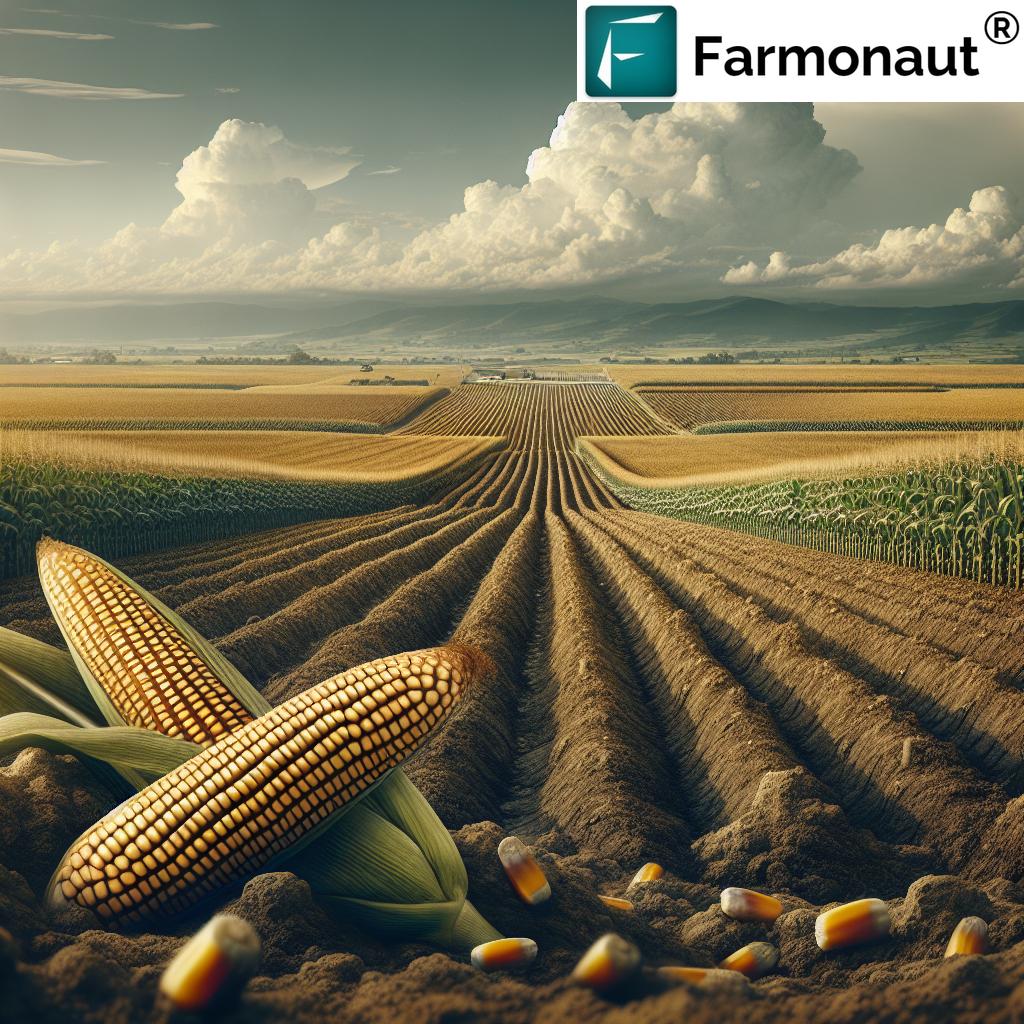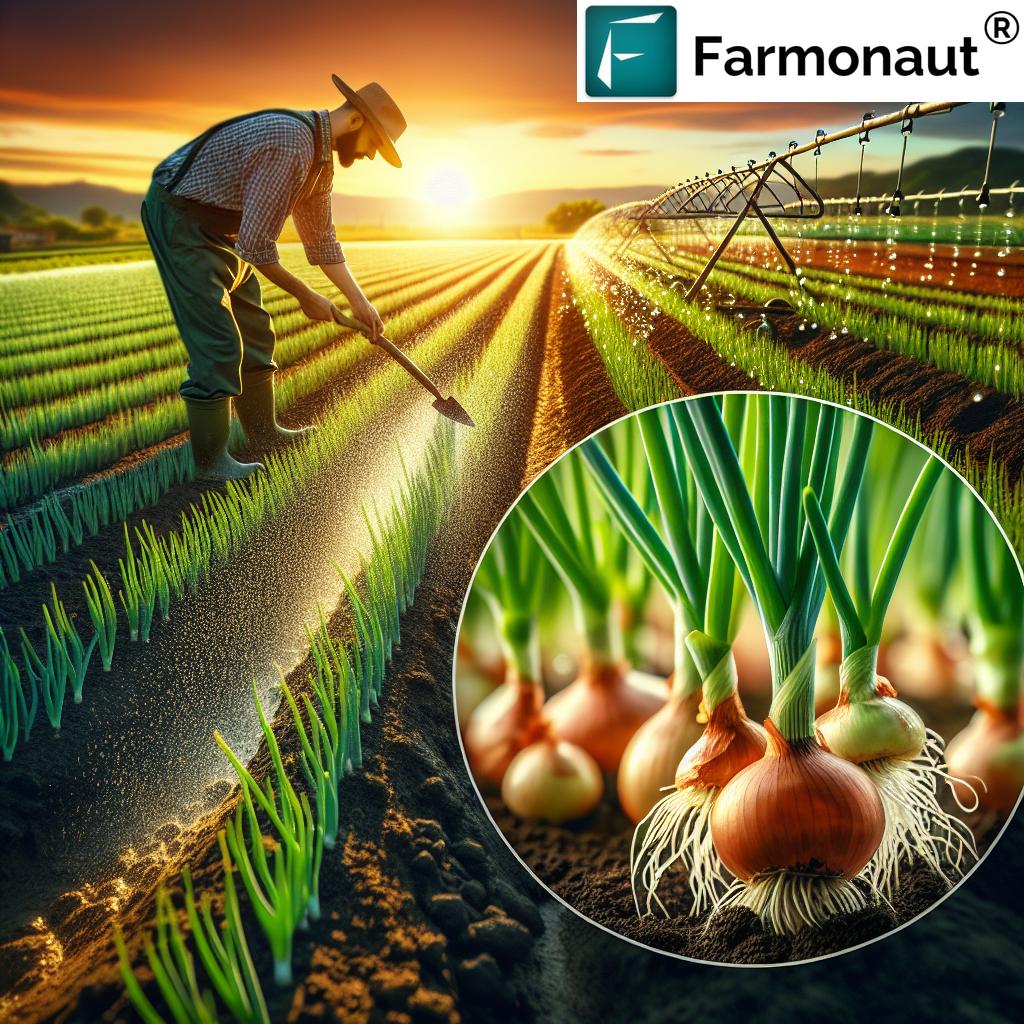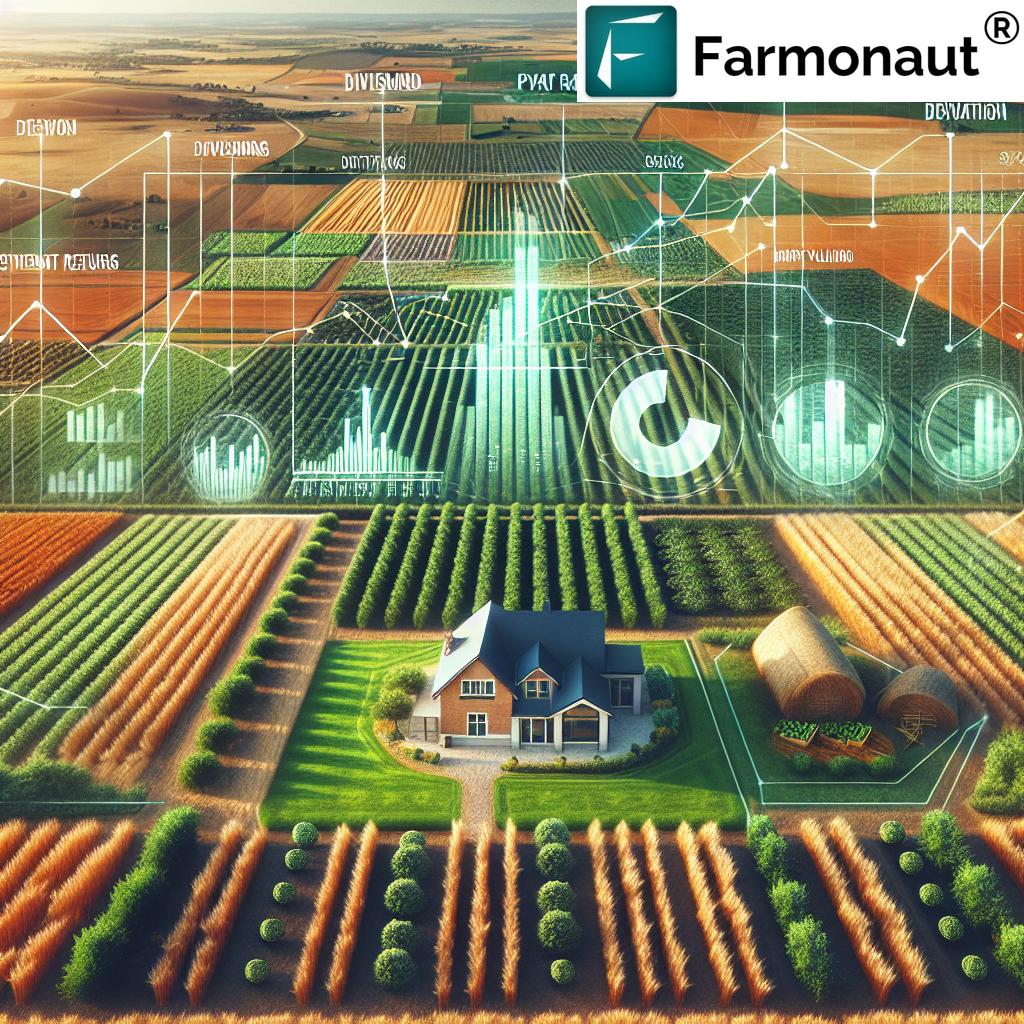Farming Tools Names 2025: Essential Agriculture Tools for Modern, Sustainable Productivity
“In 2025, over 60% of farms worldwide will use smart seeders for precision planting and resource efficiency.”
- Introduction: The Significance of Farming Tools in the Evolving Landscape of Agriculture
- Traditional vs. Modern Farming Tools: A 2025 Overview
- Essential Farming Tools Names & Their Uses in 2025
- Smart, Mechanized, and Digital Tools Transforming Agriculture
- Emerging Trends & Innovations for 2025
- Farmonaut’s Role in Tool-Based Productivity & Sustainability
- Comparison Table of Essential Farming Tools 2025
- Importance of Tool Selection & Maintenance
- The Future: Technology, Precision & Climate-Smart Agriculture
- Frequently Asked Questions
- Get Started: Modern Tools & Farmonaut Subscriptions
- Conclusion: Harnessing Innovation for the Future
Introduction: The Significance of Farming Tools in the Evolving Landscape of Agriculture
In the rapidly evolving landscape of agriculture, the role and significance of farming tools names and their functions cannot be overstated. As we move into 2025 and beyond, tools in agriculture continue to play a pivotal role in enhancing productivity, ensuring sustainable practices, and addressing pressing challenges such as climate change, growing global population, and resource scarcity. Whether one operates a small family farm or manages expansive agricultural enterprises, understanding the names of farming tools, their uses, and innovative advancements is vital for farmers, agronomists, and stakeholders aiming to optimize operations and improve yields.

Monitor Fields & Crop Health Instantly: Try the Farmonaut Web App
This guide offers a comprehensive overview of the most common and advanced farming tools with names, how these tools are broadly categorized (manual, mechanical, digital), and how innovation in machinery, sensors, and precision systems are already redefining agriculture tools names for 2025.
We’ll also explore the value of tool maintenance, safety practices, and the synergy between traditional wisdom and new technology ensuring operational efficiency and sustainability.
Traditional vs. Modern Farming Tools: A 2025 Overview
Farming tools have witnessed remarkable advancements in just the last decade. In 2025, tools are no longer confined to what we imagine from the past—think of hoes, plows, or sickles. While traditional, manual tools remain fundamental in many regions, especially on small-scale farms, a surge in mechanized and digital tools is transforming how the world’s farms operate.
- Traditional tools: Plows, spades, hoes, sickles, and shovels—vital for labor-intensive agriculture and simpler operations.
- Modern/mechanized tools: Tractors, automated planters, harvesters, drone sprayers, and satellite-based monitoring—all reduce labor intensity, enhance efficiency, and scale up productivity for large enterprises.
- Smart & digital systems: AI-driven advisory tools, IoT-enabled irrigation controllers, drone-based crop health monitoring—enabling data-driven, precision agriculture for optimizing operations and sustainability.
Essential Farming Tools Names & Their Uses in 2025
Let’s break down common and advanced farming tools names along with their practical uses in the field. Each tool is associated with specific agriculture practices, soil types, and operational needs in 2025.
Manual & Traditional Farming Tools (Still Essential in 2025)
- Plow
Type: Traditional or Mechanized
The cornerstone of tillage; used to turn and break the soil, preparing it for planting. Plows can be wooden, iron, or tractor-mounted, ideal for aerating soil and uprooting before planting. - Hoe
Type: Manual
This handheld tool is used for weeding, shaping soil, and sometimes for harvesting root crops (like potatoes or carrots). Still popular for vegetable and small plot farming. - Sickle
Type: Manual
A tool with a curved blade for cutting grasses and crops, especially cereals and pulses. Sickle remains vital in hilly regions and for manual harvesting. - Spade/Shovel
Type: Manual
Spades and shovels are used for digging, lifting, and moving soil or planting cover crops. They’re also required for compost management. - Rake
Type: Manual
Rakes help with leveling the soil, gathering hay, or removing debris from the seedbed—key for seedbed preparation.
Mechanized Tools and Modern Machinery (2025 and Beyond)
- Seeder/Planter
Type: Modern/Mechanized
Mechanized planters help in sowing seeds uniformly and efficiently, minimizing wastage and saving valuable time. See “precision planter” types below. - Tractor
Type: Mechanized
The engine-powered vehicle at the heart of most farms, tractors pull or push agricultural machinery, manage bulk work (plowing, planting, harvesting), and facilitate logistics. - Harvester/Combine
Type: Modern/Machines
These machines gather mature crops from fields, combining reaping, threshing, and winnowing in a single operation—massively increasing efficiency during harvesting. - Sprayer (Manual/Mechanized)
Type: Both
Sprayers are employed for applying pesticides, fertilizers, or herbicides. Modern versions are drone-mounted or solar-powered for sustainable practices. - Irrigation Equipment
Type: Manual, Automated, or Drip Systems
Irrigation tools range from pipes and sprinklers to automated, sensor-controlled systems optimizing water use and adapting to changing weather patterns.
Common Modern Farming Tools Names for 2025
- GPS-Enabled Precision Planter
Ensures seeds are sown at exact locations and depths for optimized yields. - Smart Irrigation Controller
Uses sensors and weather data to adjust water use—minimizes waste, boosts crop health. - AI-Driven Crop Monitoring Drones
Provide real-time field status, employed for pest detection, stress analysis, and even targeted spraying. - Robotic Harvesters
Automated machines for picking fruits, vegetables, or grains—reduce labor and increase productivity. - Soil Health Test Kits
On-site testing kits with digital data transfer, optimally guiding fertilization.
From simple hoes and sickles to AI-driven machines, choosing the right mix of traditional and smart tools is crucial in modern agriculture, especially as climate change and unpredictable weather patterns challenge conventional practices.
Smart, Mechanized, and Digital Tools Transforming Agriculture
A new breed of digital, mechanized, and smart farming tools is emerging in 2025, driven by technology, machine learning, satellite data, and automation. These advanced agriculture tools names directly address issues like labor shortages, soil health maintenance, sustainable resource use, and the need for increased productivity.
- Precision Planters and Smart Seed Drills:
Equipped with GPS and sensors for precision planting, these machines ensure every seed is dropped at the right location and depth, maximizing germination and optimizing input costs. - Automated Irrigation Systems:
Cloud-connected irrigation systems integrate weather forecasts and soil moisture sensors to regulate water delivery in real-time—improving both efficiency and crop health while addressing environmental challenges. -
AI Crop Monitoring Drones:
Drones employed for aerial surveillance, pest mapping, water stress detection, and overseeing large fields with minimal effort. -
Robotic Sprayers & Weeders:
Robots and drones equipped with advanced AI for targeted spraying and weeding, reducing chemical usage and protecting beneficial soil biology. -
Satellite-Based Farm Management Tools:
Solutions, like those from Farmonaut, provide multispectral remotely-sensed soil, crop, and field diagnostics, integrated with mobile or web apps for anywhere-access.
How These Tools Boost Productivity & Sustainable Practices
- Increase yields by dealing with climate variability (drought, irregular rain) through precision tools that optimize water, fertilizer, and pest control.
- Reduce labor intensity and manual workload, allowing farmers to manage larger plots or part-time/family labor.
- Minimize environmental impact—targeted inputs, soil health diagnostics, and reduced chemical/fuel wastage make agriculture more sustainable.
- Enable data-driven decisions for crop rotation, harvesting schedules, and resource allocations—maximizing the effect of every tool, input, and practice.
“Automated weeding tools can reduce manual labor by up to 70%, revolutionizing sustainable crop management in modern agriculture.”
Emerging Trends & Innovations in Agriculture Tools Names for 2025
Our world’s agricultural landscape is in a phase of digital transformation. Let’s look at the emerging trends in farming tools names and agriculture tools names that are shaping how farmers and agronomists improve productivity, yields, and sustainability in 2025.
- Integrated Smart Toolkits: Toolkits that combine sensors, AI, satellite data, and cloud management for end-to-end soil-to-harvest operations.
- IoT-based Sensors in Agriculture: Soil-moisture, nutrient, temperature, and weather smart sensors integrate with mobile devices and cloud dashboards, offering real-time advisories.
- Smartphone & App Integration: Many tools can be controlled, synced, and monitored with dedicated apps (including Farmonaut’s cross-platform apps), facilitating data-driven decisions.
- Drone-Based Crop Health Management: Drones increasingly replace manual scouting, generating multispectral maps for pests, water, and nutrition management.
- Blockchain for Traceability & Input Authenticity: Input, produce, and supply chain traceability tools powered by blockchain ensure authenticity and transparent records. Read more about Farmonaut’s Traceability Solutions.
AI-Driven Advisory and Satellite-Based Monitoring
AI in agriculture is not just hype—it’s now a critical tool. Farmonaut’s Jeevn AI Advisory System is a fine example, using satellite imagery and AI to deliver real-time insights on soil, weather, and crop health. It transforms massive data into actionable advice for farmers, agri-businesses, and governments, aiming to maximize yields and resource efficiency.
Modern farm management platforms and tools are now moving towards holistic resource and fleet management, with tools like Fleet Management solutions by Farmonaut—offering vehicle optimization, operational analytics, and safety monitoring. These systems cut operating costs and support sustainability goals.
Sustainable Practices and Carbon Footprinting
Sustainability is more than a buzzword; it’s the future. Modern agriculture tools names in 2025 often feature modules for carbon footprint monitoring and environmental impact tracking. With Farmonaut’s Carbon Footprinting tools, farms can access real-time environmental tracking, comply with local and international regulations, and document sustainability for market advantage.
Farmonaut’s Role: Integrating Satellite Tech & Advanced Tools for Data-Driven Agriculture
At Farmonaut, we are dedicated to integrating advanced technologies—satellite imagery, AI, and blockchain—to drive sustainable progress in global agriculture. Our platform brings affordable, real-time monitoring and AI-driven advisory systems directly to farmers, agri-businesses, and governments via mobile apps, web portals, and robust APIs.
- Satellite-Based Monitoring: We analyze multispectral satellite imagery to provide precise diagnostics on vegetation health (NDVI), soil conditions, and field performance, helping farms optimize inputs and anticipate risks.
- Jeevn AI Advisory: Our AI delivers tailored weather, resource, and crop management insights, boosting yield and efficiency.
- Blockchain Traceability: Blockchain ensures transparent, secure produce traceability throughout supply chains—benefiting exporters, agri-businesses, and governments.
- Resource & Fleet Management: Our digital tools support smarter fleet logistics, equipment maintenance, and machinery operations—reducing fuel, time, and labor wasted.
- Environmental Sustainability: Farms can access real-time emissions and sustainability analytics to improve compliance, branding, and revenues.
Access our tools on all major platforms:



Or integrate tailored satellite insights via our API and read developer docs here.
Comparison Table of Essential Farming Tools 2025
| Tool Name | Type (Traditional/Modern) |
Primary Use | Key Feature/Innovation | Estimated Cost (USD) | Productivity Impact (Est. Yield Improvement %) |
|---|---|---|---|---|---|
| AI-Driven Seed Drill | Modern | Sowing seeds with precision (depth, spacing) | GPS, sensors, AI calibration | $8,000–15,000 | 10–20% |
| Smart Irrigation Controller | Modern | Automated water delivery | IoT & weather integration, app alerts | $500–2,000 | 10–30% |
| Solar-Powered Sprayer | Modern | Pesticide/fertilizer spraying | Eco-friendly, cost-saving | $1,200–2,500 | 8–15% |
| Satellite Crop Health Monitoring | Modern Digital | Real-time field analytics | NDVI, multispectral imagery, AI | $30–200/month (subscription) | 10–25% |
| Robotic Weeder | Modern | Automated weeding | AI image recognition, solar operation | $6,000–12,000 | 10–18% |
| Traditional Hoe | Traditional | Weeding, soil breaking | Simple, cost-effective | $10–40 | 2–5% |
| Sickle | Traditional | Harvesting cereals/grass | Curved blade, ergonomic handle | $5–20 | 1–2% |
| Tractor | Modern | Pulling implements, field prep, hauling | Diesel/electric, GPS, autopilot options | $18,000–100,000 | 10–25% |
| Drone Crop Sprayer | Modern Digital | Aerial spraying (pesticides, nutrition) | Precision GPS, AI targeting | $2,500–10,000 | 5–10% |
Importance of Tool Selection & Maintenance for Crop Productivity
For farmers and agri-business operators, selecting the right tools for each operation is fundamental for efficiency, cost-effectiveness, and maximizing yield. Here’s what to consider in 2025:
- Crop type & scale: Roots and vegetables often demand hand tools (hoes, spades), while grain or cotton requires mechanized planters and harvesters.
- Soil and climate: Sandy, loam, or clay soils perform best with different implements (e.g., disc or moldboard plow, cultivators), and regions with water scarcity must prioritize modern irrigation tools.
- Sustainability goals: Use solar-powered sprayers, precision watering, and digital monitoring to reduce environmental impact and comply with climate-resilient practices.
- Labor and economic factors: Farms with labor shortage or higher wages benefit from automation and robotics for planting and harvesting—invest upfront, save over time.
Tool Maintenance: Ensuring Longevity & Performance
- Rust prevention & cleaning: Remove soil, wash tools, and apply protective oils to blades and metal parts.
- Sharpen blades regularly: This is critical for hoes, sickles, and harvesters for efficiency and safety.
- Scheduled servicing for mechanized equipment: Engines, hydraulics, and electronics need periodic checks.
- Store tools in dry, covered spaces to minimize corrosion and wear.
- Train staff on proper handling, safety, and reporting issues to maximize equipment lifespan and ROI.
The Future: Technology, Precision & Climate-Smart Agriculture
Looking ahead, precision farming tools and digital platforms will define the future. From satellite-based subscription services that monitor every field’s health, to AI and big-data-integrated machinery, agriculture will continue to leverage innovation to boost productivity, reduce inputs, and help address climate challenges. These tools do not just improve individual crop cycles; they transform the economic and environmental trajectory for global agriculture in 2025 and beyond.
Farmers, businesses, and policymakers are already seeing results. For example, automated irrigation, large-scale farm management platforms, and satellite-based crop loan verification are no longer out of reach for even mid-sized operations.
FAQ: Farming Tools Names & Modern Agriculture Tools 2025
What are the essential farming tools names for 2025?
Essential farming tools names for 2025 include: plow, hoe, sickle, spade, seed drill, tractor, combine harvester, drone crop monitoring, smart irrigation controller, and robotic weeder.
How does tool selection improve productivity?
Selecting the right mix of traditional and modern tools allows farmers to match the tool to the crop, soil type, and scale of operations—optimizing labor, boosting yields, and reducing resource waste.
What are the benefits of using smart or automated tools in agriculture?
Smart tools (such as AI-driven seeders, drones, and irrigation controllers) enhance precision, reduce human error, save time, and lower environmental impact, resulting in higher yields and improved sustainability.
Do small farms still use traditional manual tools?
Yes. Hoes, sickles, and spades remain fundamental for small or remote farms where mechanized equipment may not be suitable or cost-effective.
Can satellite monitoring benefit individual farmers?
Absolutely. Platforms like ours at Farmonaut provide affordable, modular access to satellite data for real-time crop health, soil diagnostics, and resource tracking—by app or API.
Are there options to try advanced monitoring tools by subscription?
Yes! See below for direct Farmonaut subscription options that cater to individuals, businesses, and governments.
How do modern irrigation tools save water and improve crop yields?
Automated, sensor-driven irrigation systems (e.g., smart drip or sprinkler controllers) deliver precise water amounts based on real-time soil moisture and weather, minimizing wastage and helping crops thrive in challenging climates.
Get Started: Modern Tools & Farmonaut Subscriptions
Ready to bring your farm into the future?
Monitor soil and crop health, analyze data, and access tailored AI advisories with Farmonaut’s advanced satellite-based solutions. Our subscription plans are flexible to grow with you—whether you’re an individual farmer or managing thousands of hectares.
Check the pricing and feature table below:
Conclusion: Harnessing Innovation for Productive, Sustainable Agriculture
Farming tools names in 2025 encompass everything from simple traditional implements to automated, AI-driven machinery and satellite-powered digital tools. The evolution of these tools reflects the global sector’s urgent response to labor constraints, climate challenges, and the drive for sustainable intensification. By understanding the names of agriculture tools and their strategic uses, farmers and stakeholders will continue to play a pivotal role in enhancing productivity, ensuring farm sustainability, and addressing the rising needs of our growing global population.
Embracing smart and precision farming tools is more crucial than ever for optimizing yields and safeguarding environmental resources. As the sector moves forward, integrating up-to-date tools—combined with data-driven monitoring, maintenance, and sustainable practices—will be central to the success of modern agriculture.
Explore more about satellite-driven crop management, advanced farm analytics, and smart agriculture tools with Farmonaut’s platform and apps.
Optimize your operations and plan for a productive, climate-smart, and sustainable future—one tool at a time.


